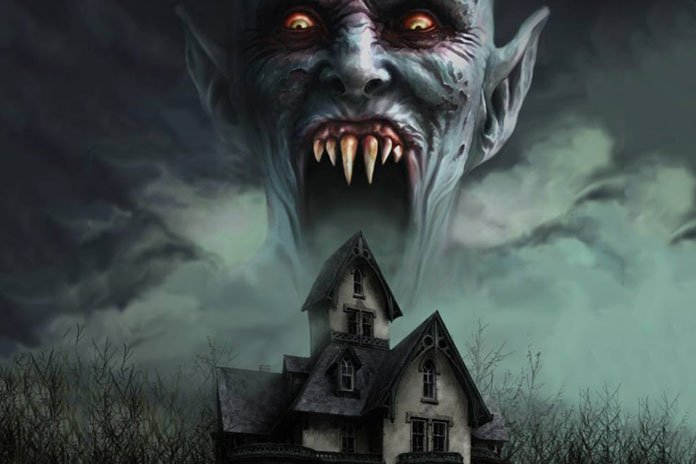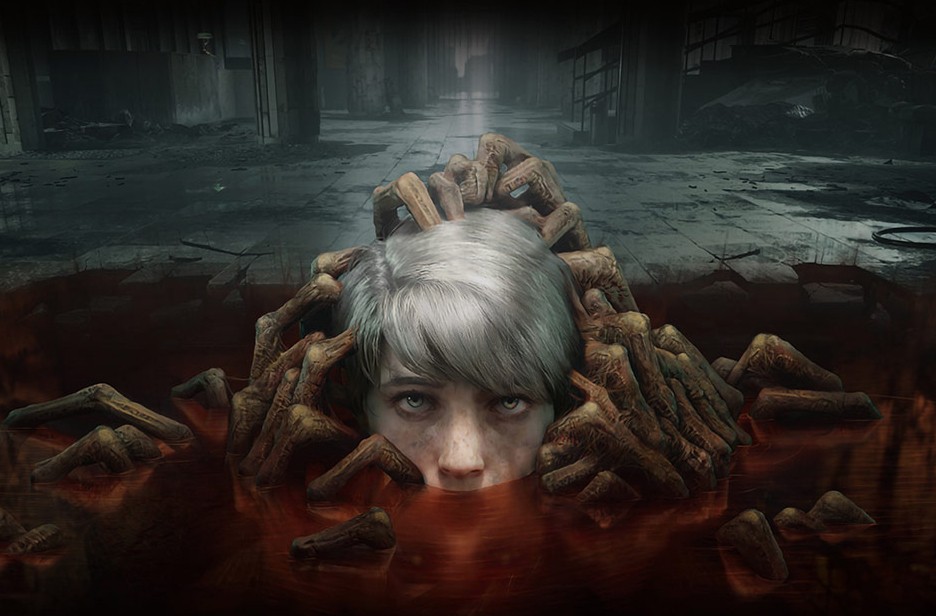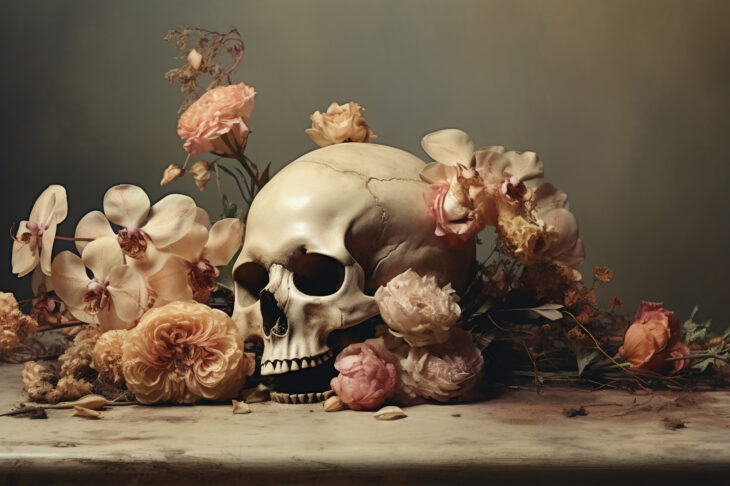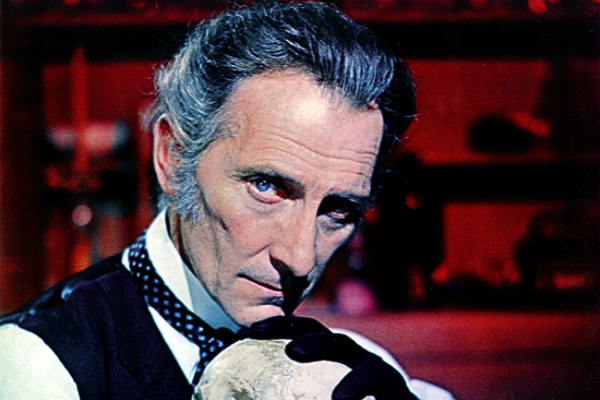
Horror Stories: A Guide to the Subgenres
Horror is a genre that has been captivating audiences for centuries, with tales of terror and suspense that leave us on the edge of our seats. But within the broad category of horror, there are many different types and subgenres, each with its own unique characteristics and themes.
From classic ghost stories to gruesome slasher films, there are countless ways in which horror can be portrayed and explored.
Whether you’re a seasoned fan or just dipping your toe into the genre, this guide will help you navigate the frightening world of horror and discover the types that speak to you. So, let’s begin our journey into the dark and twisted realm of horror, and explore the many ways in which fear can be brought to life on screen and in literature.
Ghost Stories: Tales of the Unseen and the Unknown
Ghost stories have been a popular genre of literature for centuries. These tales of the supernatural and the paranormal have captured the imagination of readers and listeners alike. Ghost stories are a subgenre of horror fiction, often involving the presence of ghosts, spirits, or other supernatural entities.
What makes a good ghost story? And why are they so popular?
One of the key elements of a good ghost story is suspense. A ghost story should build tension slowly, drawing the reader into the world of the story and making them feel as if they are experiencing the events themselves. The atmosphere is also essential, as the story should create a sense of unease and foreboding. The setting can often play a significant role, with old, decaying buildings, graveyards, and other eerie locations adding to the feeling of dread.
Characters are also vital in ghost stories. The protagonist should be relatable and sympathetic, drawing the reader into their world and their experiences. The ghosts or other supernatural entities in the story should also be well-drawn and have a sense of mystery surrounding them, adding to their otherworldly nature.
One reason for the enduring popularity of ghost stories is their ability to tap into our deepest fears and anxieties. Ghost stories can explore themes of mortality, loss, and the unknown, creating a sense of unease and uncertainty in the reader. Additionally, ghost stories often provide a way for us to confront and process these fears in a safe and controlled environment.
Ghost stories have a rich history, with tales of supernatural events dating back to ancient times. In the Western world, the popularity of ghost stories grew during the Romantic period in the late 18th and early 19th centuries. Gothic literature, which often featured supernatural elements, became popular during this time, with works such as Mary Shelley’s Frankenstein and Bram Stoker’s Dracula becoming classics of the genre.
Two popular examples of ghost stories are:
- The Turn of the Screw by Henry James. First published in 1898, this novella tells the story of a governess who is hired to care for two young children in a remote country house. As she begins to experience strange and inexplicable events, she becomes convinced that the children are under the influence of malevolent ghosts. The story is known for its ambiguity and psychological complexity, with readers left to interpret the events for themselves.
- The Haunting of Hill House by Shirley Jackson. First published in 1959, this novel follows a group of people who are invited to stay in a supposedly haunted mansion. As they begin to experience strange and terrifying events, they realize that the house is much more than they bargained for. The story is a masterclass in atmosphere and suspense, and has been adapted into several films and television shows.
The Gothic Horror Story: The Dark Side of the Imagination
Gothic horror is a genre of literature that combines elements of horror, romance, and the supernatural. It typically features eerie, mysterious, and supernatural elements, often set in ominous, decaying settings. Gothic horror has been a popular genre for centuries, and continues to fascinate readers today. What makes a good Gothic horror story, and why is it so enduringly popular?
One of the hallmarks of a good Gothic horror story is atmosphere. The setting should be evocative and foreboding, with crumbling mansions, graveyards, and other eerie locales setting the stage for the unfolding of supernatural events. Characters should be well-drawn and relatable, with a sense of mystery and ambiguity surrounding them.
Gothic horror also relies heavily on suspense and tension-building. The supernatural elements in the story should be slowly revealed, creating a sense of unease and uncertainty in the reader. Themes of mortality, the unknown, and the fragility of the human psyche are often explored, providing a deep psychological undercurrent to the story.
One reason for the continued popularity of Gothic horror is its ability to tap into our deepest fears and anxieties. The genre provides a way to explore the darker aspects of human nature, and to confront and process our fears in a safe and controlled environment. Additionally, Gothic horror often provides a commentary on social issues and cultural values, with many works addressing issues such as gender roles, class, and race.
The history of Gothic horror dates back to the 18th century, when writers such as Horace Walpole and Ann Radcliffe pioneered the genre. The term “Gothic” was originally used to describe medieval architecture, but was later adopted to describe literature that featured similar themes and motifs. In the 19th century, writers such as Edgar Allan Poe and Mary Shelley helped to popularize the genre, with their works becoming classics of the genre.
Two popular examples of Gothic horror are:
- Frankenstein by Mary Shelley. First published in 1818, this novel tells the story of a scientist who creates a living being from reanimated body parts. The novel explores themes of ambition, mortality, and the limits of human knowledge, and has become a classic of the genre.
- Dracula by Bram Stoker. First published in 1897, this novel tells the story of a group of people who are hunted by a vampire named Dracula. The novel explores themes of gender roles, sexuality, and the fear of the unknown, and has become a defining work of the genre.
Psychological Horror Stories: The Terror Within

Psychological horror is a genre of literature that delves deep into the human psyche, exploring the darker aspects of the mind and the fears and anxieties that lie within. It typically features elements of suspense, dread, and terror, often drawing on real-world fears such as isolation, paranoia, and mental illness. What makes a good psychological horror story, and why is it such a popular genre?
One of the hallmarks of a good psychological horror story is a deep exploration of the human psyche. The characters should be well-drawn and complex, with rich inner lives and motivations that drive their actions. The setting should be evocative, with a sense of foreboding and tension building throughout the narrative. Themes of identity, trauma, and the fragility of the human mind are often explored, adding a layer of psychological depth to the story.
Another key element of psychological horror is the use of ambiguity and uncertainty. The supernatural elements of the story should be hinted at but not fully revealed, leaving the reader to question whether what they are witnessing is real or simply a product of the characters’ disturbed minds. This creates a sense of unease and disorientation in the reader, adding to the overall sense of terror.
One reason for the popularity of psychological horror is its ability to tap into our deepest fears and anxieties. The genre provides a way to explore the darker aspects of the human psyche and to confront and process our fears in a safe and controlled environment. Additionally, psychological horror often provides a commentary on social issues and cultural values, with many works addressing issues such as mental health and societal expectations.
The history of psychological horror can be traced back to the 19th century, with works such as Robert Louis Stevenson’s “The Strange Case of Dr. Jekyll and Mr. Hyde” and Edgar Allan Poe’s “The Tell-Tale Heart” exploring the darker aspects of the human mind. In the 20th century, writers such as Stephen King and Shirley Jackson helped to popularize the genre, with their works becoming classics of the genre.
Two popular examples of psychological horror are:
- “Gone Girl” by Gillian Flynn. Published in 2012, this novel follows the disappearance of a woman named Amy Dunne and the subsequent investigation into her husband Nick Dunne’s potential involvement. As the story unfolds, it becomes clear that both characters have deep psychological issues and a history of manipulation and deceit. The novel explores themes of identity, control, and the complexities of modern relationships, with a twist ending that leaves readers questioning their own perceptions of the characters and their actions. “Gone Girl” was a massive commercial success and has been adapted into a popular film and stage production.
- “The Silence of the Lambs” by Thomas Harris. First published in 1988, this novel tells the story of an FBI agent who must enlist the help of a cannibalistic serial killer to catch another serial killer. The novel explores themes of identity, trauma, and the psychological motivations of both the killer and the agent, and has become a modern classic of the genre.
Cosmic Horror: The Terror Beyond Our World

Cosmic horror is a genre of literature that explores the terror of the unknown and the incomprehensible. It typically features cosmic entities and vast, ancient beings beyond human understanding, often with themes of insanity and the insignificance of human existence. What makes a good cosmic horror story, and why is it such a popular genre?
One of the key elements of cosmic horror is a sense of cosmic dread, a feeling of overwhelming terror and insignificance in the face of vast and ancient beings beyond our understanding. The setting should be evocative, with a sense of otherworldliness and the unknown permeating the narrative. The characters should be well-drawn, with a sense of unease and foreboding building throughout the story.
Another important element of cosmic horror is the use of cosmic entities and vast, ancient beings beyond human comprehension. These entities should be beyond human understanding, with their very existence challenging the limits of human understanding and sanity. The horror should be existential in nature, challenging our very sense of self and place in the universe.
One reason for the popularity of cosmic horror is its ability to tap into our deepest fears and anxieties about the unknown and the incomprehensible. The genre provides a way to explore the terror of the unknown in a safe and controlled environment, allowing us to confront and process our fears in a way that is both thrilling and cathartic.
The history of cosmic horror can be traced back to the early 20th century, with the works of writers such as H.P. Lovecraft and Clark Ashton Smith. Lovecraft’s Cthulhu Mythos, a shared fictional universe featuring cosmic entities and ancient beings, has become a defining work of the genre, with many writers building upon and expanding upon Lovecraft’s original ideas.
Two popular examples of cosmic horror are:
- “At the Mountains of Madness” by H.P. Lovecraft. First published in 1936, this novella tells the story of a group of explorers who discover a lost city in Antarctica and are confronted with the terrifying truth about the ancient, alien beings who once inhabited the area. The novella is widely considered to be one of Lovecraft’s greatest works and a defining example of cosmic horror.
- “Annihilation” by Jeff Vandermeer. First published in 2014, this novel follows a group of scientists who venture into a mysterious and dangerous area known as “Area X.” As they explore the area, they are confronted with strange and terrifying phenomena that challenge their understanding of the world around them. The novel explores themes of identity, reality, and the terror of the unknown, and has become a modern classic of the genre.
The Monster Horror Story: The Terror of the Unnatural
Monster horror is a genre of literature that explores the terror of monstrous creatures and beings. It typically features creatures that are unnatural or mutated, often with themes of fear and survival. What makes a good monster horror story, and why is it such a popular genre?
One of the key elements of monster horror is a sense of dread and fear surrounding the monster itself. The setting should be evocative, with a sense of danger and uncertainty permeating the narrative. The characters should be relatable, with their fear and struggle against the monster providing the driving force of the story.
Another important element of monster horror is the use of the monster as a symbol or metaphor for real-world fears and anxieties. The monster should represent something deeper and more primal than a simple physical threat, tapping into our most basic fears and anxieties about the unknown and the unnatural.
One reason for the popularity of monster horror is its ability to tap into our primal fears and anxieties about the unknown and the unnatural. The genre provides a way to explore our deepest fears and anxieties in a safe and controlled environment, allowing us to confront and process our fears in a way that is both thrilling and cathartic.
The history of monster horror can be traced back to the early days of horror literature, with works such as Bram Stoker’s “Dracula” setting the standard for the genre. Since then, monster horror has evolved and expanded, with new creatures and themes emerging to capture the imaginations of readers and viewers alike.

Two popular examples of monster horror are:
- “The Mist” by Stephen King. First published in 1980, this novella tells the story of a group of people who become trapped in a small town by a mysterious mist that is filled with terrifying creatures. The novella explores themes of fear, survival, and the human condition, and has become a classic of the genre.
- “Bird Box” by Josh Malerman. First published in 2014, this novel follows a woman and her two children as they navigate a world overrun by mysterious creatures that drive people insane when seen. The novel explores themes of motherhood, survival, and the terror of the unknown, and has become a popular example of the genre.
Body Horror: When the Flesh Becomes the Monster
Body horror is a sub-genre of horror that focuses on the physical transformation of the human body. It often involves the mutation, decay, or destruction of the human form, resulting in grotesque and horrifying images. What makes a good body horror story, and why is it such a popular genre?
One of the key elements of body horror is the use of visceral and disturbing imagery to convey the physical changes and transformations taking place. The horror often comes from the sense of violation and loss of control over one’s own body. The setting should be oppressive and claustrophobic, heightening the sense of terror and helplessness.
Another important element of body horror is the exploration of themes such as identity, mortality, and our relationship with our bodies. The physical changes and transformations can be used as a metaphor for the ways in which we experience change and transformation in our own lives, and the ways in which our bodies can betray us.
One reason for the popularity of body horror is its ability to tap into our deepest fears and anxieties about our own bodies and mortality. The genre provides a way to explore these fears in a safe and controlled environment, allowing us to confront and process our fears in a way that is both thrilling and cathartic.
The history of body horror can be traced back to the early days of horror literature, with works such as H.P. Lovecraft’s “Herbert West – Reanimator”. In the 20th century, writers such as Clive Barker and David Cronenberg helped to popularize the genre with their visceral and disturbing works.
Two popular examples of body horror are:
- “The Fly” by George Langelaan. First published in 1957, this short story tells the tale of a scientist who accidentally merges his DNA with that of a housefly, resulting in a horrific transformation. The story has been adapted into several films, including a 1986 version directed by David Cronenberg.
- “The Troop” by Nick Cutter, published in 2014. The book follows a group of Boy Scouts on a remote island who encounter a stranger who is infected with a deadly pathogen that causes gruesome physical changes. As the pathogen spreads, the boys must fight to survive against both the stranger and each other. What makes “The Troop” a successful example of body horror is its vivid descriptions of the physical transformations that the characters undergo as a result of the pathogen. The book is not only terrifying but also deeply disturbing, as it delves into the psychology of the characters as they struggle to cope with their altered bodies and the threat of infection.
Sci-Fi Horror: Into the Unknown
Sci-fi horror is a genre that combines elements of science fiction and horror to create stories that explore the unknown, the terrifying, and the unknowable. It is a genre that has been popularized through books, movies, and television shows, and has captivated audiences for decades.
What makes a good story in the sci-fi horror genre is a balance between science and horror, with a focus on exploration and discovery. The science fiction elements provide a backdrop for the horror, and the horror elements provide a sense of danger and urgency. The best sci-fi horror stories are those that are able to combine these two elements seamlessly, creating a world that is both familiar and unfamiliar, and a story that is both thrilling and terrifying.
The history of sci-fi horror can be traced back to the early science fiction writers such as H.G. Wells, who explored the idea of extra-terrestrial life and the unknown in his books “The War of the Worlds” and “The Island of Doctor Moreau.” Later writers such as Lovecraft and Robert Heinlein continued to explore the genre, combining elements of horror and science fiction to create stories that were both frightening and thought-provoking.
- “The War of the Worlds” by H.G. Wells – published in 1898, this classic novel tells the story of a Martian invasion of Earth. The aliens, equipped with advanced weaponry, devastate the English countryside and threaten to wipe out humanity. The novel is a commentary on imperialism and the fear of technological advancement. It is considered a seminal work of both science fiction and horror.
- “The Thing” by John W. Campbell Jr. – published in 1938, this novella tells the story of an isolated Antarctic research station that is infiltrated by a shape-shifting alien. As the creature assimilates members of the crew, paranoia and distrust spread among the survivors. The novella has been adapted into several films, including John Carpenter’s 1982 version, which is considered a classic of sci-fi horror. The story explores themes of identity, trust, and the fear of the unknown.
What’s your favourite type of horror? Let us know in the comments section below.

